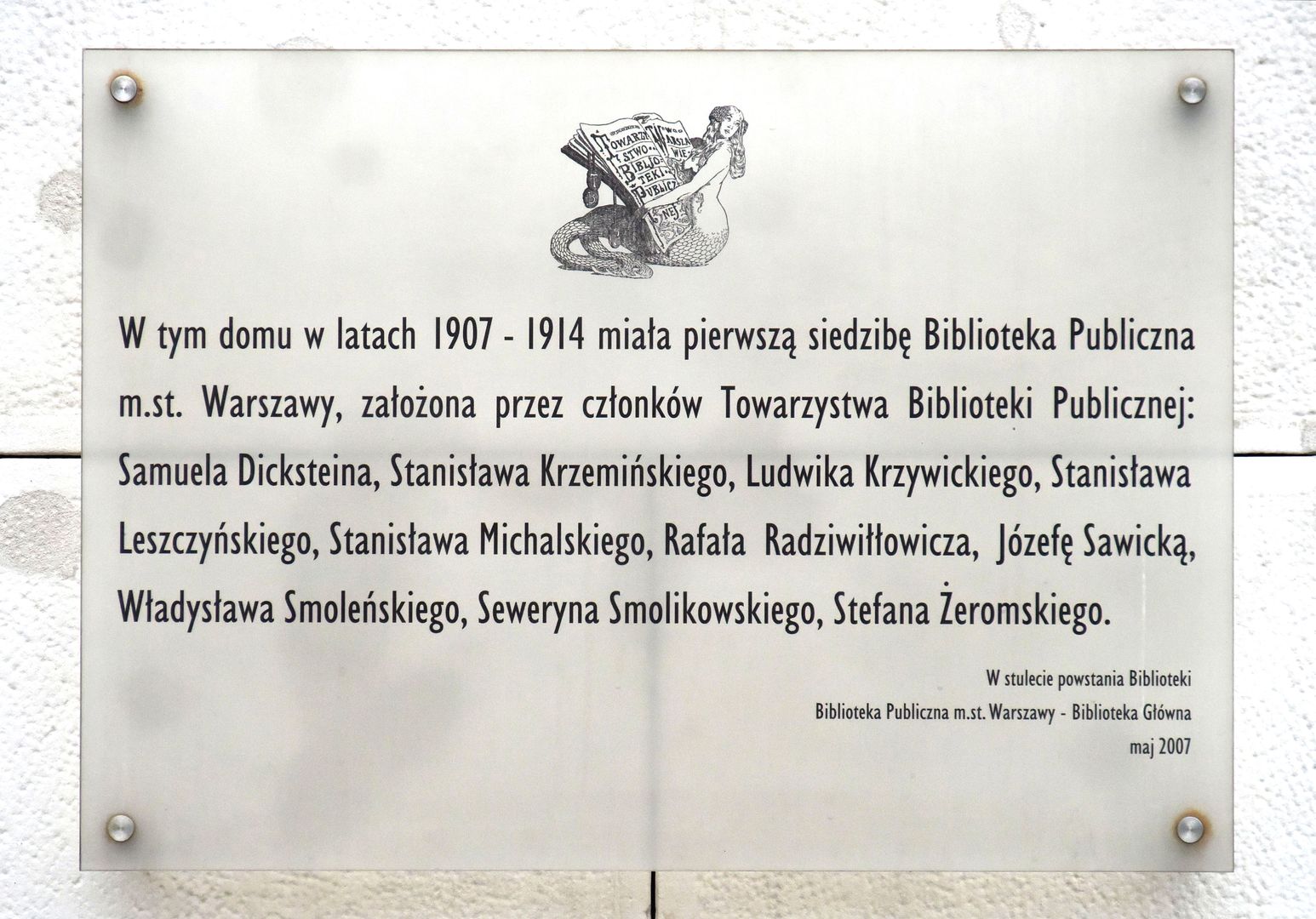Warsaw Public Library – Main Library of the Masovian Voivodeship
6.93

Overview
The Warsaw Public Library, also known as the Main Library of the Masovian Voivodeship, is one of the largest public libraries in Poland, with collections comprising approximately 1.5 million volumes. Its history dates back to 1907, when it was established on the initiative of the Public Library Society. Jadwiga Dawidowa, one of the key figures in the negotiations leading to its creation, highlighted the shortage of cultural institutions in Warsaw and the need for a scientific library, which contributed to its foundation. The first headquarters was located on Rysia Street, and it took on the role of a publicly accessible scientific library in 1914 after moving to a new building at 26 Koszykowa Street, designed by Jan Heurich. During the interwar period, the library developed dynamically, acquiring numerous donations, including valuable collections from private homes. After World War II, during which it lost 84% of its collections, the library undertook revitalization efforts, securing new materials through restitution, donations, and purchases. In 2015, a new building was opened, becoming a modern library space. Children's culture and literature hold a special place in this institution thanks to the Museum of Children's Books. The library is highly active in promoting readership campaigns; in 2023, it attempted to break the Guinness World Record for Wikipedia editing. The architecture of the new building harmoniously blends modernity with functionality, making it an important landmark on Warsaw's cultural map and contributing to the popularization of knowledge and literature among residents.
Location
Tickets
Powered by GetYourGuide
2025 Wizytor | All Rights Reserved